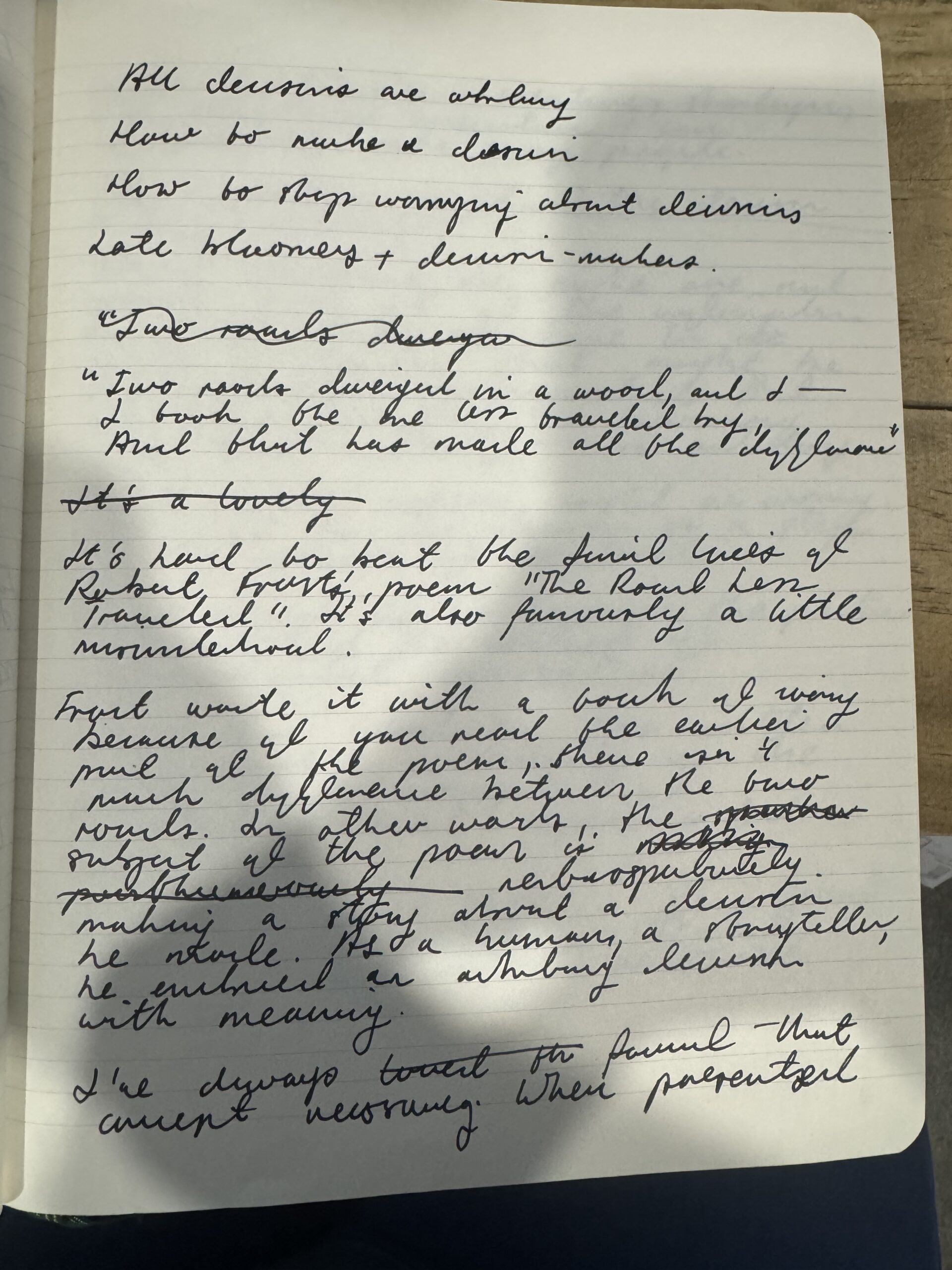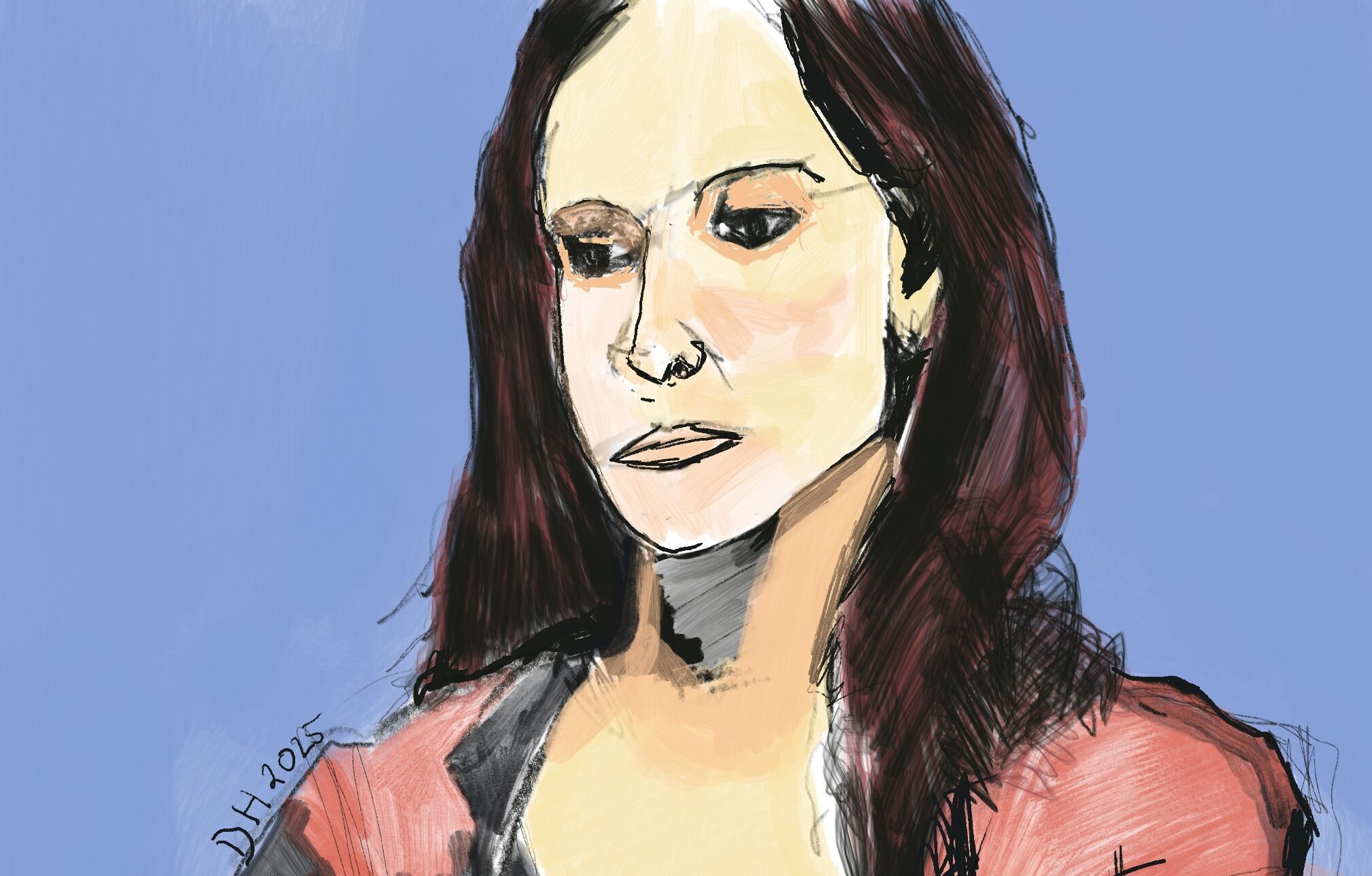How to make peace with arbitrary choices and create meaning anyway
“Two roads diverged in a wood, and I—
I took the one less travelled by,
And that has made all the difference.”
It’s hard to beat the final lines of Robert Frost’s The Road Not Taken. It’s also, famously, a little misunderstood.
Contrary to popular belief, the poem isn’t a tribute to the brave soul who forges their idiosyncratic path. If you read the whole thing, you’ll notice the two roads are described as nearly identical. The speaker is admitting they are likely to assign meaning to the choice later, not because the path itself was meaningful, but because humans love to tell stories about their decisions.
I’ve always found that poem and concept incredibly reassuring.
(Editor’s note: a couple of recent articles exploring different aspects of decision-making and creativity have been well-received and are worth a read after this one.)
Spiralling about decisions is optional.
Because when you’re stuck between options, creative, strategic, or tactical, it’s easy to spiral. Procrastinate. Defer. Endlessly ruminate over the “right” answer. But beyond a certain point, this behaviour stops being helpful. And often, the decision we’re agonising over?
It’s arbitrary.
Choosing between two logo designs? Arbitrary.
Attending that meeting or skipping it? Arbitrary.
Changing strategy? In some ways… still arbitrary.
There is no cosmic right or wrong.
It just is.
The trick, especially in creative, innovative, or uncertain territory, is realising that meaning may not come or be discernible before the decision. It’s built (or found) after.
The two paths of creativity
Malcolm Gladwell has written and spoken extensively on this idea in his exploration of “conceptual” and “experimental” innovators.
Conceptual innovators are often prodigies. They’re people who bring a fully formed idea into the world early in their careers. Their work is clean, deliberate, and planned. Think Picasso or Bob Dylan. Or Frida Kahlo, whose self-portraits and symbolism burst forth with striking clarity from a life marked by physical and emotional pain. The idea comes first; the execution follows.
By contrast, experimental innovators are late bloomers. They arrive at success through iteration, persistence, and time. The work unfolds through trial and error, rather than a lightning-bolt insight.
Paul Cézanne painted dozens of versions of the same subjects, continually adjusting light, shade, and form. The poet Elizabeth Bishop agonised over each line, sometimes revising a poem for years before publication. Yayoi Kusama, now celebrated worldwide for her immersive installations, spent decades toiling in obscurity before the world caught up with her vision.
This kind of creativity doesn’t come fully formed. It arrives in fragments, over time, and only makes sense in hindsight.
When the answer doesn’t come
Most of us like to believe that the best decisions are rational and informed, and we should wait for clarity before committing. But if you work in strategy, marketing, leadership, or any domain that involves ambiguity, you know the truth:
You rarely get perfect information.
The stakes often feel high.
And yet… you still have to choose.
This is where the poetry and the podcast collide. When Gladwell explores Hallelujah in his Revisionist History series, he shows how Leonard Cohen’s song didn’t become iconic because of a singular moment of brilliance. It became iconic because it evolved over a decade, was rewritten, rediscovered, and eventually reimagined by other artists (like the late Jeff Buckley).
What began as a quiet, experimental draft became a classic — but only because it was released, reshaped, and given time to resonate.
Time to get meta: how this article was written and drawn
This article is not on the same continuum as Halleluya. That said, it’s a creative piece of work that followed my usual approach: I start with a set of surrounding ideas, but without a clear vision of how they all come together. In this case, I’ve been meaning to talk about Gladwell’s observations and Robert Frost’s poem. I didn’t realise I was going to put them together. That’s why I resonate with the experimental innovators. I often feel like I will know what I’m after when I see it.
This article began like many others—a handwritten draft. I find that I sometimes think more clearly and solve problems in a different way when I handwrite. I don’t know why.

Handwriting that Doctors would be proud of
Then I had my AI partners transcribe my notes and started working with them to hone and shape a second draft. A key thing I noticed was that Gladwell hadn’t included any female creatives, so I chose a handful and made some judgment calls about which type of innovator they most closely aligned with.
I’ve been hand-drawing the occasional blog post, and this article felt like it could use one. So I sketched it up in Procreate. You can see my experimental approach in this time-lapse below. I’m trained to kill my darlings, so even when I’d made some interesting marks, if they didn’t suit the overall composition, they were gone. Again, I didn’t know what the final image was going to look like, even a clear idea of colour. I went down a few rabbit holes before I got the final result.
More work to be done: it’s what happens after the decision is made
What does all of this mean? A good way to frame this is to think about an actual decision being made.
Maybe the decision you’re facing right now feels impossibly important.
Here’s another way to think about it:
What if it’s not the decision that matters most, but what you do after you’ve made it?
The road isn’t special.
The meaning isn’t preordained.
You make the choice. And then you build the meaning around it.
So pick the logo.
Say yes to the project.
Choose the headline, the team, the direction.
Go left, go right… just go.
And tell the story later.

